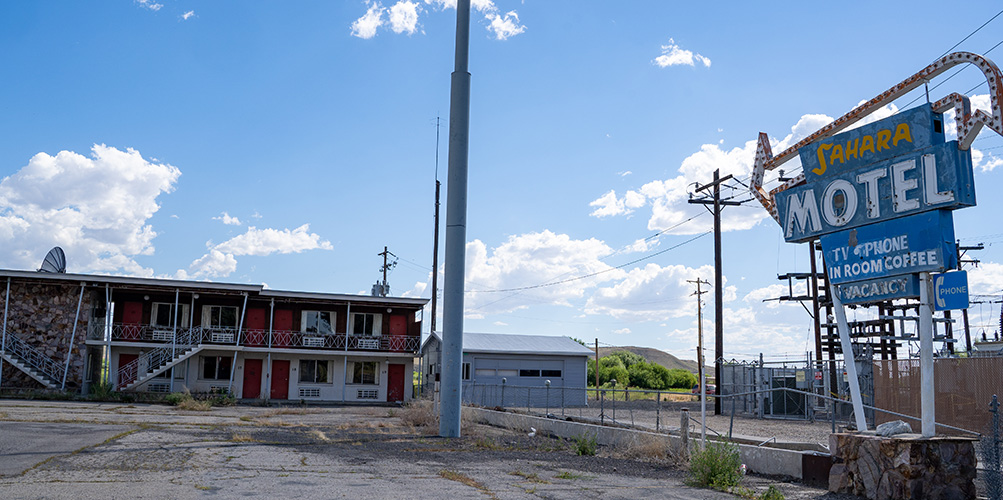At a glance
Examples of when ATSDR has deployed a community stress team to assist locations where environmental contamination has affected the population.

Background
In 1995, ATSDR held an "Expert Panel Workshop on the Psychological Responses to Hazardous Substances." Following the workshop, a stress team coalesced within ATSDR.
From the late 1990s to the early 2000s, the ATSDR Community Stress Team (CST)
- Worked with communities to develop public health strategies to mitigate community stress arising from technological disasters and chronic environmental contamination; and
- Delivered trainings on stress and contamination for public health and environmental professionals and, in some communities, for local psychologists, health care providers, and social workers.
In 2017, ATSDR published a fact sheet to help community members understand and cope with stress caused by environmental contamination
- Coping with the stress that environmental contamination can cause (available in Spanish)
- Tips on using the stress fact sheet (for health professionals)
Learn more from CST operation examples. Select from blue locations on the map or click on the locations in the table below.
Jackson County, Mississippi

In 1996, the Mississippi State Department of Health, ATSDR, and EPA confirmed 1,800 homes and businesses had been contaminated. This happened over a 10-year period and was caused by methyl parathion used through unlicensed indoor pesticide use. Many community members were temporarily relocated to motel rooms during extensive assessment and remediation efforts.
ATSDR performed training workshops about the stress of displacement and contamination with state social workers. ATSDR also assisted health educators with the development of educational materials for displaced individuals.
Libby, Montana

For decades, a vermiculite mine and processing plants exposed miners, plant workers, community members and families, to amphibole asbestos. In 2002, EPA declared Libby a Superfund site.
- ATSDR's and EPA's Community Involvement Coordinators intervened by first discussing the possibility of addressing psychosocial stressors with the EPA's Libby Community Advisory Group as part of the federal government's public health response.
- ATSDR's and EPA's Community Involvement Coordinators next conducted a community needs assessment that included psychosocial issues.
- They then took several steps to legitimize the stress experience, including informal outreach efforts through local radio messages.
- A health fair was organized to address concerns about asbestos-related diseases, and medical support groups were created to offer informational and social support to community members with asbestos-related diagnoses.
The CST supported the efforts of local social workers and University of Montana researchers. They continued to provide psychosocial and other forms of support to the community after CST concluded its formal operations. In addition, SAMHSA gave these local professionals a grant to develop a training manual for addressing the psychosocial effects of CEC. These efforts also resulted in an extended program of community-based participatory research that yielded a considerable amount of valuable information.
Fallon, Nevada

In 2001, a rare cluster of acute lymphoblastic leukemia in 16 children was confirmed in a small farming community. A CST member visited the site and assessed community concerns. These concerns revolved around toxic stigma due to media coverage and fear for children’s health.
SAMHSA and ATSDR subsequently conducted a more comprehensive needs assessment. They found that the community wanted to use available state grant funds to hire a social worker. They wanted this social worker to provide psychosocial and practical support to affected families. They also wanted media training for community leaders to combat the toxic stigma being created by the media. The CST worked with community representatives to outline the process that would help achieve these goals.
Grand Street Mercury Site, Hoboken, New Jersey

In 1996, an artist community living and working in an old lightbulb factory discovered gallons of elemental mercury under a floor. After an unsuccessful remediation effort by a local company, the building was declared a Superfund site. Community members were evacuated due to unsafe levels of mercury exposure.
Stress due to exposure and relocation was identified during medical assessments, and an ATSDR Medical Officer became involved. After conducting a community needs assessment, ATSDR provided training on contamination-related stress to personnel at Robert Wood Johnson Medical School. ATSDR also worked with them to provide a support and referral network for community members.
Hazleton, Pennsylvania

An underground gasoline spill contaminated water and was alleged to cause a spike in cancer rates. A CST member negotiated and facilitated more direct communication among these agencies to work toward solutions. Eventually, the interacting groups applied for grants to conduct a needs assessment. The CST also provided risk communication and education to community social service workers. Prior to the CST’s involvement, there were communication problems and conflict among local and federal agencies.
Graniteville, South Carolina

A train derailment in 2005 resulted in extensive airborne chlorine gas exposure, including fatalities and severe injuries in exposed factory workers. Though after the formal conclusion of the CST operations, ATSDR did provide technical assistance to the state. This assistance included information about the potential development of psychological effects. The South Carolina Department of Health and Human Services developed handouts. These handouts discussed managing stress and parenting children experiencing stress as a result of the chlorine gas release.
Hanford Nuclear Reservation, Tri-Cities, Washington

People who grew up in the Tri-Cities area were impacted by contamination from the Hanford Nuclear Reservation. This was developed as part of the Manhattan Project to create plutonium for nuclear weapons. From 1944 to 1951, radioactive Iodine-131 was released and scattered across eastern Washington. This led to community exposures through consumption of local produce or milk from contaminated animals. Decades after the Iodine-131 exposure, community members who were exposed in the 1940s were concerned. They worried about an increased risk for thyroid cancer related to the previous exposure.
In 2005, ATSDR offered health care providers guidance on dealing with the psychological and physical health consequences of exposure to radiation. ATSDR emphasized the importance of providers learning the skills of sensitive health risk communication and supportive counseling. ATSDR also emphasized the importance of recognizing the potential for rare but serious psychological consequences of exposure.

